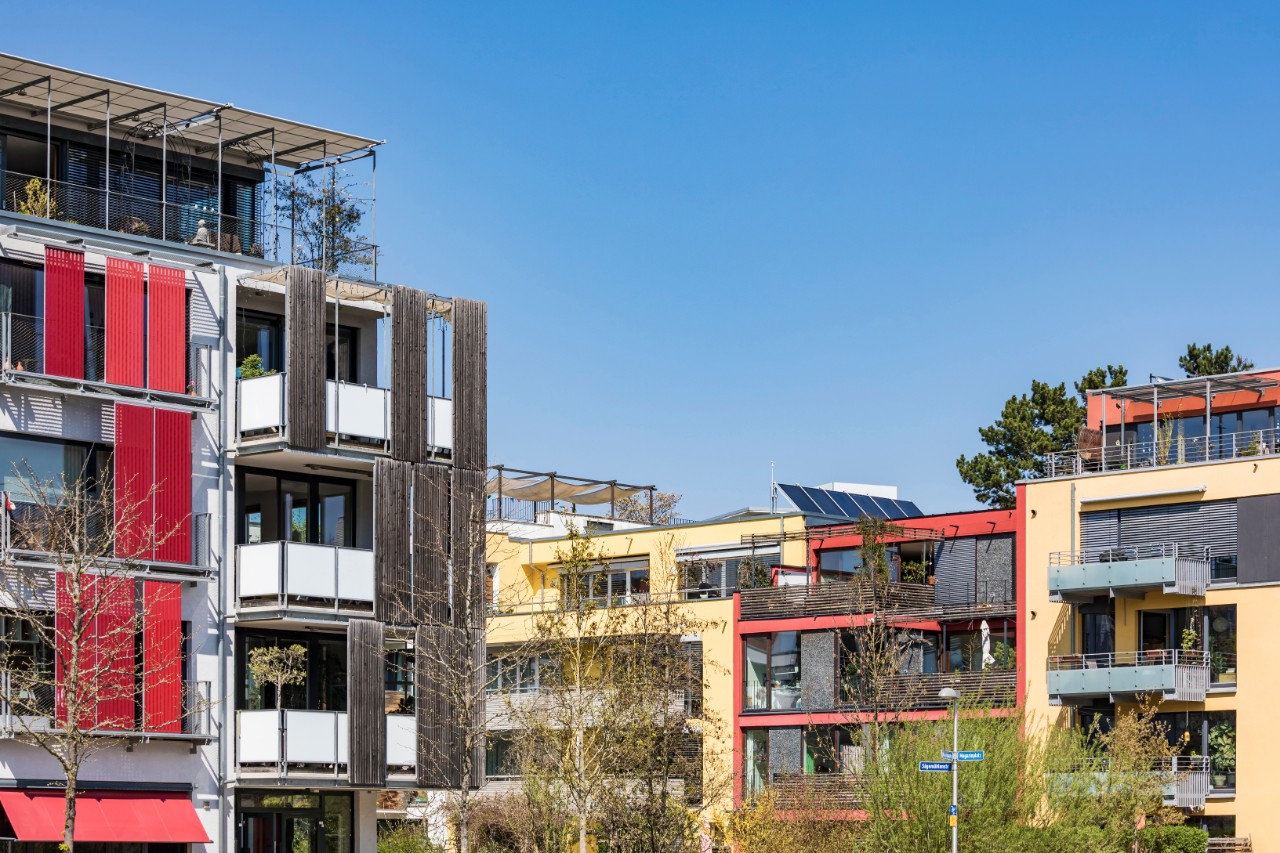{{item.title}}
{{item.text}}

{{item.text}}
2022 started with the end of the Covid-19 crisis, but the war in Ukraine promptly made for more downside effects. Rising inflation figures around the world are fuelling uncertainty and are already leading to increased base rates in the United States. Switzerland, with a healthy economy and a strong franc, is performing well, and is currently able to maintain its low interest rate level. On the mortgage market, fixed-rate mortgages are currently increasing, though this is not impacting significantly on demand for owner-occupied homes. The owner-occupied property market remains tight as prices continue to rise. Meanwhile, prospective yields on multi-family units are falling continually. Rents are registering slight growth but remain largely stable. The office market is gradually levelling out, though there is still a shortfall in demand. The same is true of the market for retail space, where rents are expected to continue to contract this year.
The warfare in Ukraine is having a varied impact on international economies. While the United States is hardly affected by the war, the euro zone is exposed to greater risks [73]. The crucial question will be whether gas supplies will be turned off by the relevant parties in the coming months, or whether Russian commodity exports will continue to flow.1 Switzerland is less dependent on Russia and Ukraine, and therefore the effects of the conflict on the Swiss economy are likely to be limited for the time being. The Swiss economy remains in good shape. The recovery from the pandemic is proceeding faster than expected and unemployment is returning to its pre-crisis level.2 Nonetheless, the conflict entails national risks with respect in particular to the Swiss export industry. In addition to the increased prices for commodities, which impinge on households’ purchasing power in general, Switzerland is home to the head offices of a number of international commodities firms and so could be affected by the embargoes.3 Against this backdrop, the consensus growth forecast for 2022 has been revised from 2.8% at the start of 2022 to 2.7%, with inflation expected to be 1.6% (end of the year: 0.9%). The current forecast for 2023 is for growth to drop to 1.7% [8].
In the first quarter of 2022 the recovery in the economy following the pandemic had a considerable effect on the labour market. Employment was at its pre-crisis level, while unemployment fell. According to the State Secretariat for Economic Affairs (SECO), in February 2022 the unemployment rate was 2.4%, which represents a reduction of –30.7% against the same month last year.4 The consequences of the war in Ukraine for the labour market are still difficult to gauge at present. Though inflation effects point to a rising impact on employers and employees, redundancies are not to be expected. Nonetheless, a slowing in employment growth from the second quarter of 2022 until the end of the year is to be anticipated, followed by an increase resulting from catch-up effects after a potential end to the war.3 The unemployment rate for 2022 is forecast to be 2.3%. . In 2023 a slightly reduced rate of 2.2% is anticipated [8,9].
Rising inflation rates in global markets were already being seen in the previous quarter. At this point in time it was assumed that the rise in prices was the result of catch-up effects and shifts in demand following the pandemic and of the expansion in the money supply. This was regarded as a short-term phenomenon and inflation was expected to flatten out in the course of 2022. However, following Russia’s invasion, the prices of energy sources, certain foodstuffs and industrial metals went up, which also affected Switzerland indirectly.5 In February 2022 the inflation rate in Switzerland rose to 2.2%, the highest rate since 2008, and thus exceeded the SNB’s target range of 0–2%.1 Inflation is currently being moderated by a slight appreciation in the Swiss franc on the currency market.6 The SNB’s estimates are for inflation of 2.1% in 2022 and 0.9% in 2023 [11]. It is thus maintaining an expansionary monetary policy and leaving its base rate at –0.75%. At the same time, the SNB remains ready to intervene on the currency market if necessary.6 At a global level, the situation is already somewhat more critical. The United States is battling inflation rates of up to 8.3% (March 2022): the Fed has raised its base rate to 0.75–1%. It remains to be seen to what extent this price momentum will impinge upon the European market and not least the Swiss market.7
On the mortgage market, interest rates have recently risen significantly. Fixed-rate mortgages in particular are pursuing an upward trend and in March 2022 the rates for three, five and ten-year fixes were 1.43%, 1.67% and 2.08% respectively, putting them well above the rates in the previous quarter (1.05%, 1.10% and 1.39%) [23]. The latest interest rate increases turn a home ownership discount of 15.5% (the figure at the start of 2021) into a home ownership premium of around 3.1%. This means that paying rent for a comparable property is currently cheaper than buying it.8 Those who elect to finance their purchase on a variable SARON rate, however, benefit from an interest rate of–0.7% and continue to enjoy a home ownership discount [21]. This trend increases the level of vulnerability in the sector, which is why the Swiss Federal Council, at the behest of the SNB, has increased equity capital requirements as at 30 September 2022.6 Nonetheless, it is assumed that this measure will do little to curb demand for residential property. The low volume of construction activity, a desire to own one’s own home and the continuing low level of interest rates are leading to a further expansion in mortgage lending compared with the previous year, with the volume rising to over CHF 1,114.4 billion, an increase of around 4% [24].
In the first quarter of 2022 the construction index stood at 148 points, which was slightly lower (by –1.8%) than in the previous quarter. Against the previous year, however, it was up by 2.1% [17]. This trend is based on solid order books and the ongoing rise in construction prices.9 Though the increase in residential property construction is less marked than in overall building construction, in this sector, too, rising sales are expected on the basis of the large volume of work, an increased focus on more expensive owner-occupied housing and pent-up work on the existing housing stock.8
Likewise in the industrial and service sectors , an increasing amount of investment in construction is being planned after the interruption caused by the pandemic. In general steady growth in building construction is expected, subject to potential risks such as rising construction costs or raised interest rates.3
Owner-occupied property remains sought after in Switzerland. Demand has settled at a significantly higher level following the pandemic.10 Factors such as negative interest rates, low mortgage rates with short terms and the trend for working from home are keeping demand steady. However, it has become less attractive to build properties for owner occupation, as the risk of not being able to offload less attractive homes is relatively high.11 The excess demand continued to drive up prices for owner-occupied properties this quarter, and many people are no longer able to afford to buy their own home.9
Owner-occupied property prices remained on an upward trajectory in the first quarter of 2022. Compared with the previous quarter, prices once again rose, gaining 1% (owner-occupied apartments 1.7%, single-family homes 0.5%), though the curve flattened slightly compared to past quarters. The index, standing at 221.9 points (1985: 100), is at a new record high. Consensus forecasts point to further increases in prices for 2022/2023 [3, 4, 7]. In regional terms, all regions with the exception of southern Switzerland recorded higher prices compared with both the previous quarter and the previous year. The largest rise in prices was recorded in the Geneva, Jura, Basel, and Zurich regions, each of which was up 1.2% over the previous quarter. Southern Switzerland experienced a slight drop in prices with a decline of –0.3% compared with the previous quarter, though year on year prices rose by 3.8%.12 In the market for owner-occupied apartments, the mid-price segment experienced the largest price rise at 5.3% against the previous year (low-price segment 4.5%, premium segment 4.8%). In the case of single-family homes, the largest increase in value was registered in the premium segment at 5.2% (low-price segment 3.7%, mid-price segment 4.7%) [ 58, 64].
For many investors, there is still no alternative to investing in multi-family units. A high level of demand means that prices for multi-family units have risen repeatedly. In Switzerland as a whole, market values rose 1.7% against the previous quarter. Meanwhile, compared with the previous year values were up by 8.2% [27]. At cantonal level, all regions recorded rising market values against both the previous quarter and the previous year, with the cantons of Grisons (+12.5%) and Basel-Stadt (+10.6%) posting the largest appreciation in value for multi-family units. As in the previous two quarters, the canton of Jura registered the smallest increase in values at 3.6%. Hand in hand with rises in market value, most of the cantons recorded higher net income within a range of 1–2.9%.13 Rising prices are putting increased pressure on expected yields from multi-family units. The consensus expectation for the minimum discount rate (net, in real terms) is 1.71%, which is 2 basis points below the previous quarter’s figure [34, 35]. The total return rose compared with the previous year at 8.5%, though the return from changes in value accounts for the larger share of that at 5.5%. The private sector is taking a greater interest in capital investment in multi-family units. The single-family homes segment is thus losing ground to the multi-family units segment with regard to capital investment, with replacement investment being worthwhile particularly if there is space for permitted expansion and renovation work is due. In the last six years, 70% of demolitions of single-family homes have resulted in replacement, new-build multi-family units, which makes a considerable contribution to increased density.10
The effect of the contraction in the vacancy rate last year is being reflected in residential rents, with a time lag. While in the previous quarter rents were still stable or even fell, rising rents were recorded across different regions in the first quarter of 2022. Rents rose by 0.9% against the previous quarter and by 1.7% against the previous year. It was only in southern Switzerland that rents declined, sliding by 0.5%. Rents rose the most compared with the previous year in the regions of Mittelland (+2%), eastern Switzerland (+2.1%) and Zurich (+1.9%). The existing buildings sector tended to experience larger rent rises than new builds14 [25, 26]. The increased rents are attributable to net inward migration, the larger demand for residential property in urban centres following the Covid-19 crisis and a lower level of planning permission for building residential property [12, 13]. 3 Experts anticipate stable to falling rents in the remaining quarters of 2022 [5].
The demand for office space still failed to return to its pre-crisis level in the first quarter of 2022. The vacancy rate for 2022 is estimated to be 10–25% higher than in the previous year. At the same time the rate of approved planning applications for office space is around 17% below the long-term average. Although the demand for space recovered during the first quarter of 2022, a significant amount of space is still being advertised, especially outside the major centres [42]. The forecasts for office space point to rents falling by up to –1.5% [2, 6]. The outlook on the market for premises is for a recovery in the office segment, despite vacancies remaining at a high level and declining rents.9
A look at transaction prices for office property reveals a slightly rising trend in rents across the regions. Almost all regions show an increase in rents of between 0.6% and 3,0% against the fourth quarter of 2021. The Basel region was alone in recording relatively sharp reductions in rent at –2,3%. Year on year, the largest rent rises were registered in the regions of Geneva (4.2%) and Zurich (5.4%). Nationally, a year-on-year rise in rents of more than 3.2% was recorded, pointing to a recovery in the market situation in the office sector [36, 37, 38]. Market values are likewise moving in a positive direction, with all cantons experiencing growth in values except for Basel-Landschaft and Thurgau. Year on year, the regions of Zug and Schaffhausen benefited the most from rising values. Overall, market values in Switzerland as a whole rose 9.7% against the previous year and 2.9% against the previous quarter [40]. Net income was up by an average 2.4% against the previous year. The trend is upwards, though the cantons of Basel-Stadt (–7.3%), Basel-Landschaft (–7.1%) and Thurgau (–8.3%) showed falling net income.13
The pandemic brought a degree of upheaval to the property market. The steady interests of the populace as regards their living and working arrangements are now a thing of the past. Digitalisation as a main driver of the transformation has taken its toll in particular on bricks-and-mortar retail. Despite the putative economic recovery, falling rents for retail space are forecast to continue in 2022 (UBS –2%, WP –2.5%) [6]. Market values for retail space will fall further in 2022 in peripheral locations, though they are forecast to stabilise in 2023 [47]. Stabilisation will come about through rethinks in the sector among other things, with a lot of space being converted to eateries or showrooms.15
Digitalisation with hybrid employment models is a marked phenomenon on the property market and is setting new trends. For instance, increased demand for second homes has been registered this year. The rise in prices for second homes was 8.1% at the end of 2021, which was significantly higher than the national growth in value of 5.9% (2021).16 Rising prices for second homes are based on higher demand in conjunction with restricted supply as a result of the Second Homes Initiative. It is expected that, with limited supply, prices will continue to go up in 2022, though demand is likely to abate in the course of the year.9
1 Swiss Life Asset Managers, Perspektiven Konjunktur / April 2022
2 Staatssekretariat für Wirtschaft (SECO), Konjunkturprognose: Ukraine-Konflikt bremst die Erholung, März 2022
3 ETH Zürich, Konjunkturanalyse: Prognose 2022 / 2023. Schweizer Wirtschaft behauptet sich trotz Ukraine-Krieg, Frühjahr 2022
4 Staatssekretariat für Wirtschaft (SECO), Die Lage auf dem Arbeitsmarkt, März 2022
5 Staatssekretariat für Wirtschaft (SECO), Konjunkturprognose, Prognose Schweiz/Frühjahr 2022
6 Schweizerische Nationalbank, Quartalsheft, 01/2022 März
7 Reuters, US-Notenbank denkt nicht an noch stärkere Zinsschritte, Börsen steigen deutlich/Mai 2022
8 Credit Suisse, Economist Alert, Kaufen wieder teurer als Mieten, 02.05.2022
9 Credit Suisse, Bauindex Schweiz, 1. Quartal 2021
10 Credit Suisse, Schweizer Immobilienmarkt 2022/März 2022
11 Zürcher Kantonalbank, Immobilien aktuell / April 2022
12 FPRE, Transaktionspreis- und Baulandindizes für Wohneigentum (Datenstand 31.03.2022)
13 FPRE, Marktindizes für Renditeimmobilien (Datenstand 31.03.2022)
14 FPRE, Marktmieten- und Baulandindizes für Renditeliegenschaften Schweiz (Datenstand: 31.03.2022)
15 JLL, Wie sieht die Zukunft der Innenstädte aus?/Oktober 2021
16 Wüest & Partner, Zweitwohnungen, Mehrere Gründe für den Boom/Januar 2022
{{item.text}}

{{item.text}}

Sebastian Zollinger
Director, Head Real Estate Advisory, PwC Switzerland
Tel: +41 58 792 28 87



